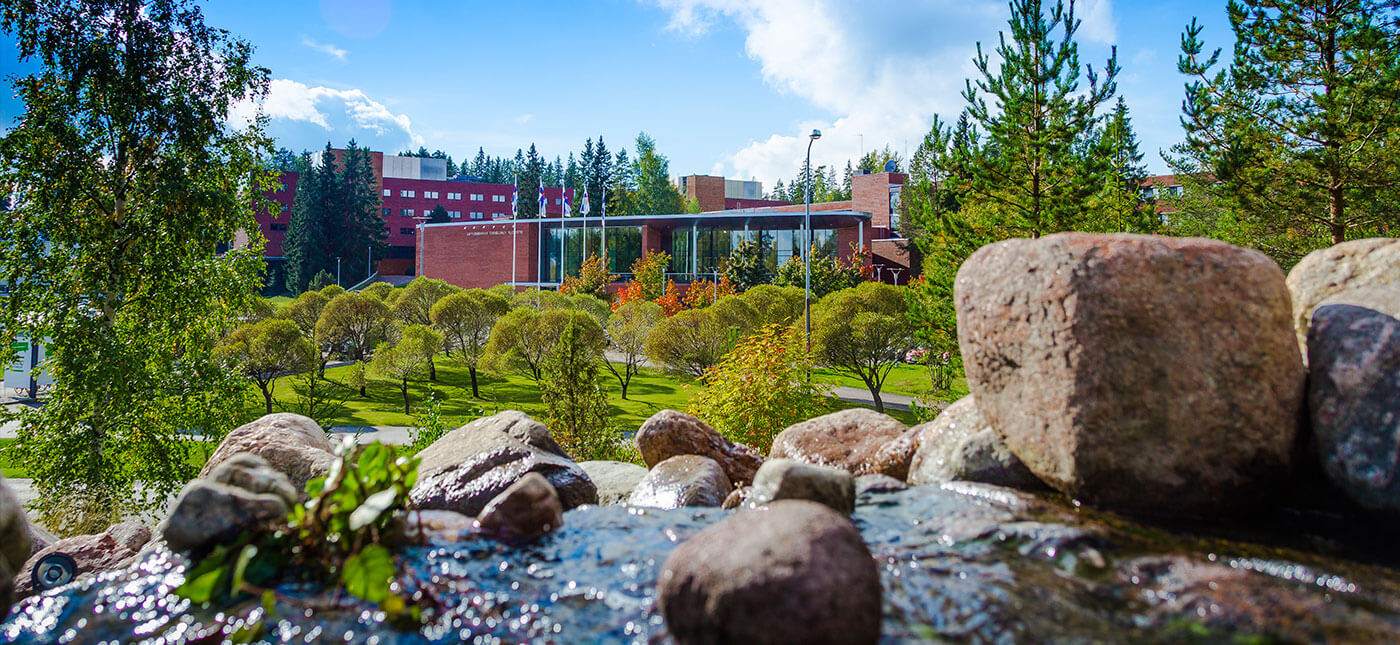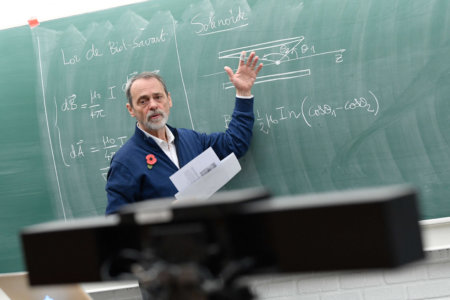What’s the secret to being the happiest country in the world? Finland has figured it out for four consecutive years, and one of its answers lies in education.
The country once again topped the World Happiness Report in 2021, based on data derived from the Gallup World Poll. Renowned for socially progressive policies with the best public education system in the world, choosing LUT University was a no-brainer for New York native Abraham Kipnis to deepen his knowledge in technical physics.
World-class education for a climate-conscious future
“I chose LUT to broaden my worldview and get a globally-oriented education in physics and sustainability. Finland has one of the most progressive goals for zero carbon emissions in the European Union,” says Kipnis, a second-year student of the university’s Master’s Programme in Technical Physics. “I wanted to see what I could learn and how I could contribute to Finnish society by living and studying at LUT.”
At LUT, sustainability isn’t just a catchphrase; it’s a way of being. Driven by its “Science with a Purpose” strategy to meet the 2030 Sustainable Development Goals (SDG), LUT’s campuses in Lappeenranta and Lahti are already using its own Green Campus research development to be carbon negative by 2024. A big aim for sure, but definitely in sight for a university with a precise roadmap enriched by expertise from various stakeholders and researchers.
https://www.youtube.com/watch?v=PpFawdT8CDE&t=1s
Kipnis is among those at LUT applying technical physics theories for scientific breakthroughs in energy efficiency. One of LUT’s current key research areas is on superconductors, which are indispensable to switchovers in energy conversion and information technology. Elaborating on his thesis, which concerns how superconductors react to magnetism, Kipnis explains, “I am trying to grow thin films of gold on a niobium crystal facet using a technique called molecular beam epitaxy (MBE). I then do imaging and spectroscopy on the grown material with a scanning tunnelling microscope (STM).” He believes this research could offer new material platforms towards faster and more energy-efficient devices for long-term sustainability.
It’s little wonder that LUT performs well in green rankings; the Times Higher Education has even listed it as one of the top 10 universities in the world with the best practices on climate action. LUT’s high-impact research in the field of semiconductors is done in close collaboration with the European Organisation for Nuclear Research (CERN), home of the Large Hadron Collider. The pot for technical physics at LUT is further sweetened through first-year internship opportunities at CERN, which is a sure way to boost career prospects for aspiring researchers.
For Russian PhD graduate Ekaterina Soboleva, the future of semiconductors is already in her hands. LUT gave the perfect place for collaboration on her research into Atomic Force Microscope to investigate surface properties of promising materials, such as porous semiconductors and Heusler alloys. Following LUT’s unwavering vision in developing sustainable technologies, Soboleva investigates ways to improve existing applications in semiconductors so that businesses can consider applying new materials in future products. “I would like to continue research work in academia and to support the transition to a sustainable world,” she hopes.
Vast networks for global solutions
While looking for study abroad options from Sri Lanka, Veenavee Kothalawala came upon LUT’s course offerings and was impressed at how the curriculum aligns with her research interests. Fast forward to 2021, she is now a PhD candidate, a teaching assistant, as well as a Junior Researcher at LUT’s School of Engineering Science after finishing her master’s degree in Computational Engineering and Technical Physics at the university.
“I believe that LUT provides the best complementary environment to learn, grow and expand the horizons of our area of expertise,” she asserts. Kothalawala’s study focuses on the mechanism of rechargeable lithium-ion (Li-ion) batteries, which ubiquitously power everything from laptops to electric cars. Her particular study looks into the properties of lithium nickel oxide (LiNiO2) as a possible cathode alternative to lithium cobalt oxide (LiCoO2) in Li-ion batteries research due to its high discharge capacity, low cost, and environmentally acceptable properties.
LUT’s strong faculty and extensive network connections with leading international scientific organisations such as CERN, Helsinki Institute of Physics (HIP), CSC – IT Centre for Science and SPring-8 in Japan — one of the world’s largest synchrotron radiation facilities — provide boundless resources for its community to elevate their body of research.
“Even though the major field of my study is related to Technical Physics, this research is accompanied by several other areas as well, for example, material science and chemistry across different interdisciplinary approaches,” Kothalawala elaborates. She is already admitted to several collaborative works, thanks to the influence of supervisors who have worked on projects worldwide.
From Newton’s laws to Quantum Mechanics, the study of physics has undeniably impacted the world’s greatest inventions and scientific revolutions. LUT’s physicists are becoming forerunners in predicting future needs in the Fourth Industrial Revolution by merging curiosity and systematic application of knowledge.
If you’re keen to master Technical Physics for real-world solutions, find out more about joining LUT here.
Follow LUT University on Facebook, Twitter, Instagram, LinkedIn and Youtube












